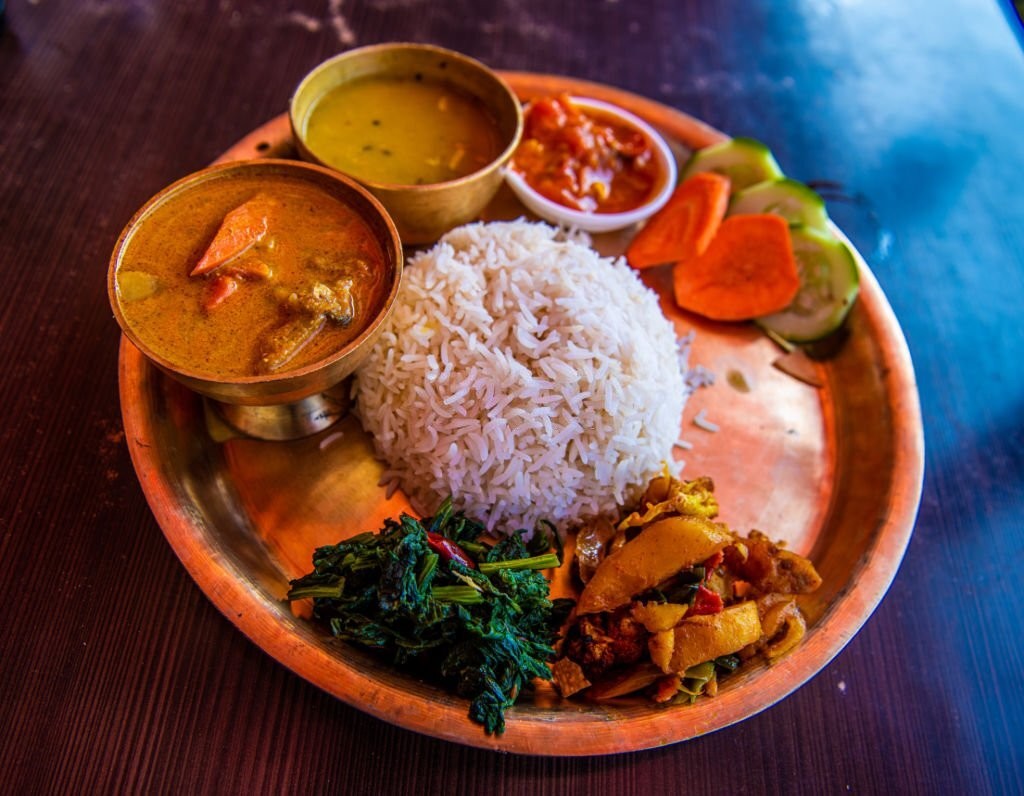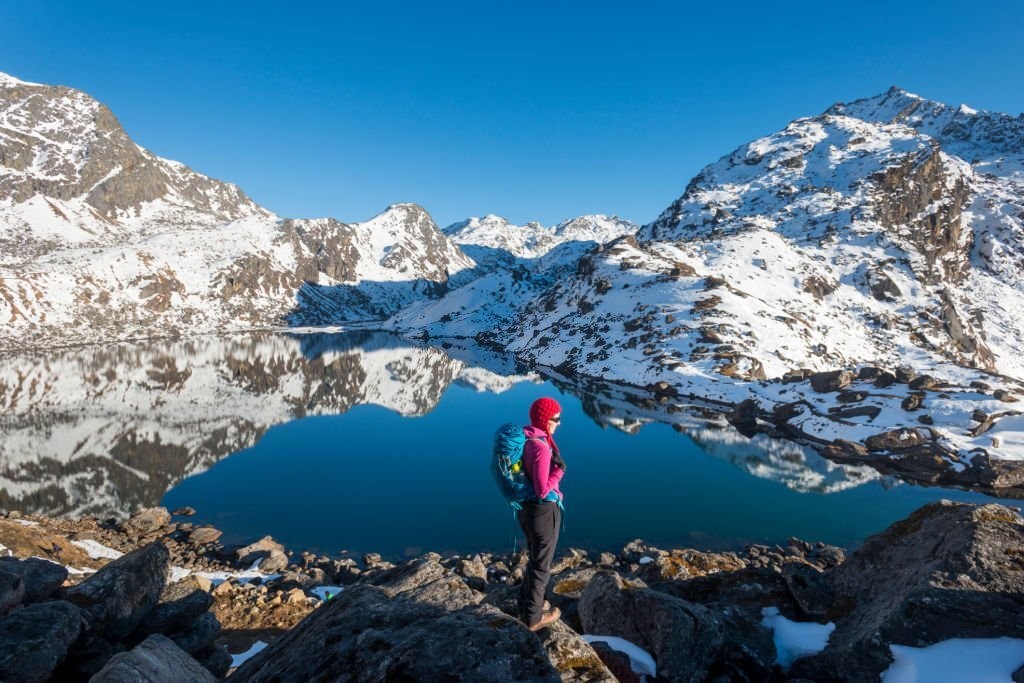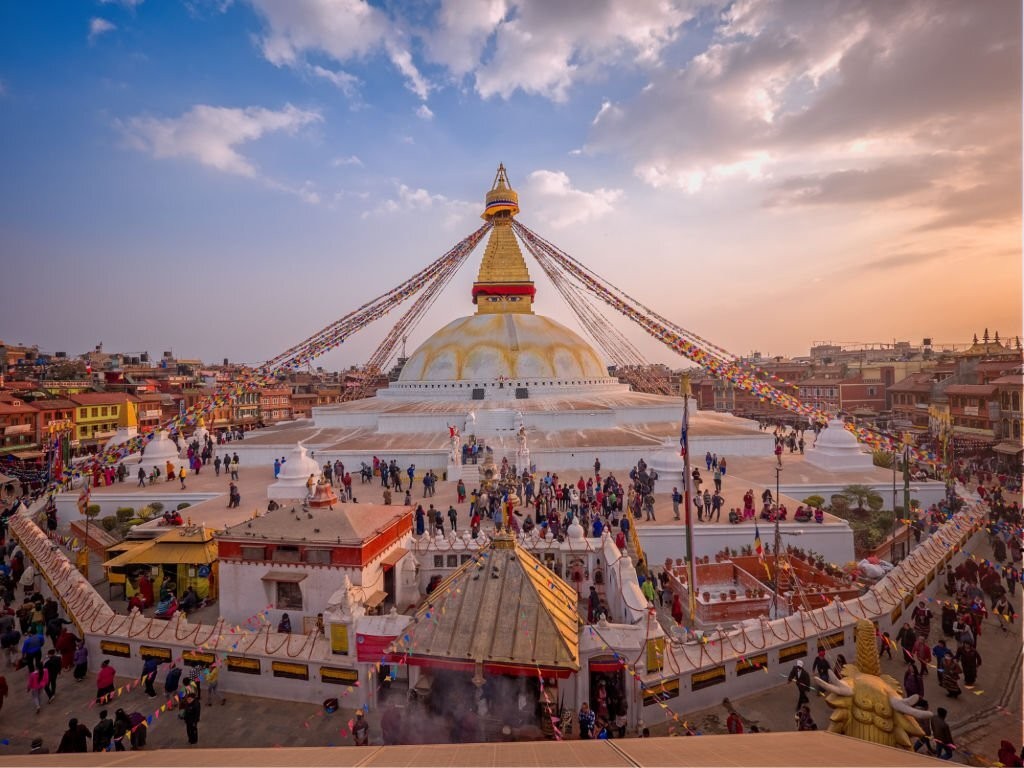1. How difficult are Treks in Nepal? Can I join?
Nepal has it all, even if you are a greenhorn or a veteran hiker, there’s something for anyone with a love for adventure. This is just the place for you to wet your footfalls. We are experienced in determining what’s most suitable for you according to your choices & how far you would want to go…no matter what level of trek you choose, you will enjoy the journey of your life on Nepal’s mountains…in a nutshell, treks are surely not difficult, however, for the higher altitudes, if you’ve enjoyed hiking wherever you are, then treks above 3-4000m are never a problem, you’d just love it.you can join any of our package.
2. What preparation is needed for a trek in nepal?
We provide sleeping bags, down jackets for the Lodge to Lodge trek (Teahouse) and tents, mattresses, kitchen equipment (all of the highest quality) during the Camping Treks. However, trekking shoes, personal equipment and climbing equipment is up to you. See our equipment list or email us for a specific list.
3. What is the food and accommodation like on treks in Nepal?

This is good question. Yes! Absolutely… your food and water is safe while you are on a lodge and camp trek. We ensure the food is hygienically prepared in your lodge. Moreover, our guides are the cooks while you are on a lodge trek, they check the ingredients for your meals before it’s prepared in the kitchen & make sure everything is Okay. Most of the cooks in the local teahouses are simply trained but experience has made them perfect. You will get boiled water in the lodges or you can purify the water with tablets and bottled sealed water in case of insufficient supply even though we are conscious about current environmental issues. On BTL’s camping trek, our crews are a good combination of Guides, Sherpas, Cooks, Kitchen staffs and Porters. Guides and cooks are technically, practically and theoretically well trained where as kitchen staffs and porters are practically trained well.
While on a camping trek our best cooks prepare you with a variety of delicacies hygienically prepared. You will find different menus for each day on the trails during your entire trek. Teahouse trekking is a popular method of trekking in Nepal and has almost replaced camping trips. This style of trekking involves resting in teahouses or lodges scattered throughout the trekking route. In most cases, teahouses are established & run by local families with facilities like accommodation and food. Some teahouse may also provide you with internet facilities. Please read our blogs for more information on Teahouse Trekking in Nepal. It will show you what to expect & be prepared for when on a teahouse trek.
4. What if I am very slow in the group?
Each day you can expect to hike for five to seven hours, covering 10 to 14 km. However, above 3500m, the times will be the same but you’ll only cover 8 to 9 km. importantly, all our itineraries are flexible and can be altered by weather, geographical and physical conditions of the individual participant. In most cases, the group you move with are very understanding because we mention this in our briefing or orientation before the trek commences. Your sirdar [local trek leader] makes the decisions & the group always follows the instructions or request of the trek leader at all times. This is made very clear in the beginning.
5. AMS and safety measure needed while doing the trek?
In the case of a serious sickness or a casualty, which we believe will not happen; you shall be rescued by a helicopter. Since you are entirely liable for all the expenses incurred in evacuation please make sure that it is covered by your insurance before assigning for it or be prepared to pay on your own after getting back in Kathmandu. Ask your guide to arrange a runner to the nearest communication point and inform office about the requirement of a helicopter. While asking for the helicopter, please send the name of the sick person and give the exact location from where the helicopter can airlift you.
Do not leave the place although you are getting better once you have ordered Helicopter. Altitude Mountain Sickness [AMS] does not generally occur except in rare cases. Our itineraries are planned in a way that gives you enough acclimatization so you get used to the thin air above 3000m. Our safety measures are always in place before we commence on any trek above 3000m.
6. What do I bring or carry with me while trekking?
We provide sleeping bags, down jackets for the Lodge to Lodge trek (Teahouse) and tents, mattresses, kitchen equipment (all of the highest quality) during the Camping Treks. However, trekking shoes, personal equipment and climbing equipment is up to you. See our equipment list or email us for a specific list.
7. Do I need travel insurance to join any trek?
Insurance is not available here for tourists. It is really important before any of our trips that you be protected against comprehensive expenses that may incur due to medical issues or accidents (to include air ambulance, helicopter rescue, and treatment costs). Please be noted that we don’t arrange or sell insurance. Your trip is more enjoyed with good travel insurance. In the event of any sickness or injury, the cost of emergency treatment and evacuation is pretty high. Therefore, travel insurance is strongly recommended for everyone who signs up with Beyond the Limits [BTL].
We strongly advise that you be careful while choosing a policy as some insurance has exceptions for adventure travel. Before buying insurance make sure your insurance company is aware of the BTLT adventure itinerary that you are going to undertake and is agreeable to cover all activities being undertaken in the trip. Such as if you are planning trekking or climbing/expedition in the Himalayas your insurance must cover emergency air ambulance/helicopter rescue including medical expenses. For group tours in urban areas, your insurance coverage of ambulance or helicopter rescue is not mandatory, however, it’s better to have them too.
You need to send us your copy of your insurance policy (e.g. your insurance certificate) or carry it with you while you come on the trip.
8. Can we buy mineral water, coke and chocolates when on treks?
Yes, this is available in most villages that we trek through, especially on popular treks that most trekkers make a choice for before the trek. Of course, most trekkers generally do their shopping in Kathmandu before heading to the mountains; but in the event of your forgetting to purchase your needs, the above mentioned items are available most times in different villages we hike through or at teahouses that we lodge in on the trip.
9. Why trek with experienced trek leaders and a reputed company?
We are a Government of Nepal licensed trekking agency. We have been organizing tours, treks, and expeditions for our valued clients since August 2000. Your guide will be a local Nepali, but a fluent English speaker. We can also provide guides who speak French, Spanish, Japanese, German, Chinese or Italian if you require. Most of our guides come from the mountainous regions of Nepal. They are carefully selected on the basis of their appropriate experience, leadership skills, and personal aptitude.
With an objective of sustaining local communities Beyond the Limits Treks only employs staffs from the different groups of Nepal’s diverse ethnic community; including Sherpas, Gurung, Magar, Rai and Brahmin Chhetri who have adequate knowledge about the culture, ecosystem, flora, fauna, geography, and history of Nepal. Moreover, we provide the guides who have gone through special training package programs like Intensive Wilderness First Aid, Trekking Guide Training, Eco Trekking Workshop & Adventure Meet, Rock climbing, Ice Climbing, and Mountaineering (for expedition leaders), etc, which are certified and approved by the government of Nepal.
10. Can we customize a private trek?
Depending on the prevailing situation, you can modify it to some extent after consulting with your guide. However, the date of trek completion should always coincide with the original itinerary. You should keep in mind that this is an adventure trip into the remotest regions within the Himalayas in Nepal, where many unforeseen events may contribute to the need for a change in itinerary. In such cases, we or your senior guide will suggest the best alternative similar to your original itinerary after consulting with the group.
11. Do you reserve rooms at the lodges before or during the trek?
We accommodate trekking groups in local lodges available on the trail. As it is not possible to book the rooms days in advance, we send a porter few hours ahead of the group each day to book the rooms.
12. What are the most favorable periods to embark on a trek/tour/expedition?
The best season for visitors heading to Nepal is autumn (mid September-November) & spring {March to June}. The weather is highly pleasant & so are the mountain views. While spring season (March-May) is also considered a good season, the temperature is mildly warm in the lowlands while moderate at higher altitudes with plenty of opportunities to revel in the mountain views. It is also the time for flowers to blossom and the national flower of Nepal – rhododendron sweeps the ascending altitudes with its magnanimous color and beauty. Winter season (January-February) is also recommended for tours, safari and low altitudes trek below 4000m. But for some areas of Nepal, Tibet and India, summer season (June- August) are the best months because these areas are ‘rain shadows’ and monsoon is much lighter here.
13. What altitudes can I be taken up to?
Going through our trekking itineraries will tell you we go the mile above the timberline, we do expedition climbs up to the summit of 7000m, both from Nepal and Tibet side. If you’re new to climbing in the Himalayas, we can offer advice on a peak, or if you have a particular one in mind we can make it happen. For more have a look at our climbing and expedition page.
14. On the Environmental front is your company Responsible?
Since we run a company that’s linked to tourism, we are obligated to keeping the environment clean, at any cost, no matter what. We are very serious about our environmental obligations & ensure that firewood is never used to cook food. In partnership with the Kathmandu Educational Environment Project (KEEP), we have contributed to a number of successful clean-up campaigns and awareness programs; its true that tourism is taking a toll on natural green landscapes, we believe that all should committed to being a part of the solution for preserving Nepal’s natural beauty.
15. How Much of care is given to your staff ,especially porter?
Exploitation is rampant in Nepal’s tourism infrastructure & this is a bad spot that one has to note; workers from almost every part of Nepal’s various industries are under paid & overworked, this is a very serious issue that has affected the reputation of this Himalayan country. However, at Beyond the Limits [BTL], we ensure the rights of our employees, especially our guides, porters & cooks who spend a lot of their time in some very harsh conditions.
We provide all our staff with good salaries, insurance, proper equipment, training and medical treatment if & when needed. Also we work in tandem with the International Porters Protection Group (IPPG).
Most Popular Trekking Destination in Nepal:
More Interesting Blogs:
▪ 6 Things not to Miss while you are in Nepal
▪ A Must Visit Tourist Place in Kathmandu in 2 Days
▪ Best Streets Foods in Kathmandu you can’t miss out
▪ Top 7 Best Treks in Everest Region for 2023







